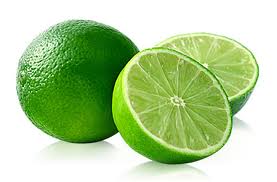 While the lemon tends to be a more popular fruit, the lime certainly has a more storied history. Originating in southeast Asia, the lime quickly spread around the world due to its acidic and exotic taste. From southeast Asia, Arab traders brought this fruit to the Middle East and North Africa. From here, the Romans learned the benefits of this exotic fruit and shared it with the Empire due to its ease of travel, taste and medicinal qualities. Limes were brought to the New World, and were quickly integrated into the local cuisine and agriculture scene.
While the lemon tends to be a more popular fruit, the lime certainly has a more storied history. Originating in southeast Asia, the lime quickly spread around the world due to its acidic and exotic taste. From southeast Asia, Arab traders brought this fruit to the Middle East and North Africa. From here, the Romans learned the benefits of this exotic fruit and shared it with the Empire due to its ease of travel, taste and medicinal qualities. Limes were brought to the New World, and were quickly integrated into the local cuisine and agriculture scene.
This wonderful citrus fruit grew rapidly in the Caribbean and Florida, where it was used to quickly cook fish as well as a preserve. Adapting to a local climate, the famed Key Lime was created and remains a favorite variety today.
Key Nutrients
Limes are an excellent source of vitamin C, vitamin B6, folic acid, potassium and flavonoids. Flavonoids are a class of molecules with a high amount of anti-oxidants.
Health Benefits
Vitamin C – Regular consumption of foods rich in vitamin C helps the body develop resistance against infections and scavenges harmful, pro-inflammatory free radicals. Vitamin C also helps to prevent respiratory problems such as asthma and lung cancer. Vitamin C has been shown to lower blood pressure, and therefore lessen the probability of hypertension.
Flavonoids – Flavonoids are a class of antioxidants which help to promote healthy cell growth and reduce inflammation. They are also a powerful class of molecules when it comes to reducing the risk of certain cancers.
Potassium – Potassium is an essential mineral which aids in fluid regulation, protein synthesis and cardiovascular health. High levels of potassium are associated with reduced risk for stroke, improved blood pressure control as well as bone health.
Vitamin B6 – Vitamin B6 helps to keep your immune system in good working order. It aids in the breakdown of fats, carbohydrates and amino acids while helping to maintain the health of lymph nodes. Additionally, vitamin B6 helps to regulate blood glucose levels.
Vitamin B12 – Vitamin B12, or folic acid, helps to preserve neurological function and DNA synthesis. It also plays a key role in the health of red blood cells. The nervous system relies on vitamin B12 for proper function as well.
Season
Lime trees bloom year round, making it available during all seasons of the year.
Nutrition Information
Per 1 Fruit (67 grams):
Calories (cKal): 20
Protein (grams): .47
Total Fat (grams): .13
Carbohydrates (grams): 7.06
Fiber (grams): 1.9
Buying and Storing
When buying limes, make sure the fruit is semi-soft to the touch and free of blemishes. When storing at home, limes can last on your countertop for up to two weeks.
Best Way to Add to Diet
Lime makes a great addition to almost every recipe. Drizzle lime juice on a bit of fish for an extra tart taste. Add lime juice to some raw fish to make a simple and practical ceviche. Lime makes a great addition to any smoothie or juiced recipe.
Lime Recipe
Jicama Slaw with Lime and Cilantro

 Not Sure What Healthy Foods To Eat?
Not Sure What Healthy Foods To Eat? This week we take a look at one of my favorite healthy foods...the mighty Avocado.
This week we take a look at one of my favorite healthy foods...the mighty Avocado.
No comments yet.